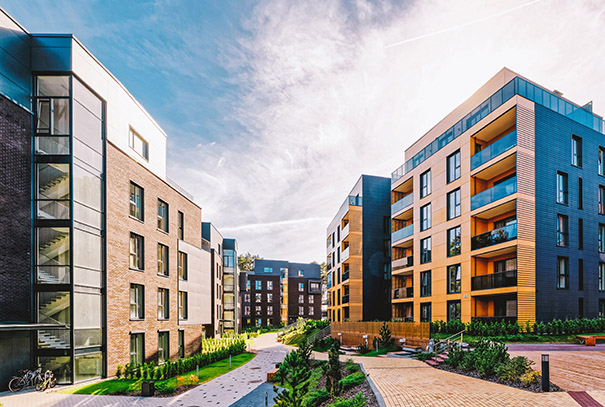
The sector is now extremely hot as an investment product; proving its resilience through the global pandemic, and undersupply is only serving to increase valuations further. Europe still only has in the region of 2.5 square metres of logistics space per household, compared to 7.5 square metres per household in the U.S. — meaning there appears to be plenty of room for growth.
Why is logistics so attractive?
The simplest way to look at why logistics is so attractive from an investment perspective is to look at the five key drivers behind valuations.
- Rents: Market rents grew healthily in 2019, before remaining stable during the pandemic, and in some areas are still growing where land is scarce. Most forecasts and predictions suggest rents climbed in 2021 and will continue to do so in 2022 and beyond.
- Yields: In the last six or seven years, market yields in the logistics sector have compressed from 7% or 8% to circa 3% in the UK, Germany, France and the Netherlands —with the remainder of Europe sitting somewhere in the 4%-5% range1. The general consensus is that these will continue to reduce to align themselves with prime European office yields — however, for context, U.S. logistics yields are comfortably below prime office yields, meaning there is scope for significant compression still.
- Incentives: Incentives, or payments or concessions offered by a landlord to entice tenants, have generally decreased in recent years, with many transferring into upgrades to the assets, or sustainable features being added to the building.
- Downtime: Downtimes, or periods where a property is vacant, have continued to decrease due to the significant demand across both the sector and geographies.
- Non-Recoverable Costs: Non-recoverable costs, or costs that cannot be recharged to tenants, have remained broadly stable for owners/landlords.
Finally, and equally of importance , the cost of land continues to rise, as do construction costs, meaning the cost of building new stock and new assets continues to increase —only serving to make good quality existing assets that much more valuable.
All in all then, logistics assets as an investment product look to be both relatively stable and therefore lower risk, but also the market as a whole appears to be on an upward trajectory, meaning it is unsurprising that capital providers from all over the world are looking to gain a piece of the European logistics pie.
What does all this mean for insuring these assets?
Logistics assets present a number of challenges —some that are fairly synonymous across the property sector, and some that are unique to logistics.
Construction and Valuation: Of interest to insurers of all property assets, knowing what the building is made of, with a particular microscope on cladding/panelling, is crucial to getting insurers onboard. Often, if it is unclear as to the makeup of composite panelling, insurers will require intrusive testing to be undertaken prior to committing to provide cover.
With rapid rises in construction costs, ensuring regular Reinstatement Cost Assessment (RCAs) are undertaken to maintain adequate sums insured, and/or ensuring there are sufficient inflation provisions within your policy wording has arguably never been more important to prevent any risk of underinsurance.
Tenants and Storage Heights: Tenancy, tenant fit-outs and storage are all crucial factors in underwriting logistics business. The significant variance of both tenants themselves and the contents they are storing at these assets can have a significant bearing on the cost of insurance. Storage heights are also of significance, as if such assets are sprinklered, insurers want to have confidence that the sprinkler/fire suppression systems are able to properly function, and are not hindered by excessive storage blocking them.
Whilst not currently a major problem due to the overwhelming demand, keeping insurers informed of tenant changes and/or periods of vacancy at a property is a material fact and therefore crucial to ensuring continuity of cover.
Location and Site Security: Location is always critical in property insurance for a number of reasons —including but not limited to the potential flood risk, proximity to other assets/buildings, volumes of local traffic and/or footfall, and local crime rates. Site security therefore plays a significant role in the underwriting process, not least because often logistics sites can be prone to arson attacks and/or travelling communities looking to set themselves up on-site. By the nature of logistics assets, they can often be quite difficult to fully secure due to the size of the perimeters, so having either good, operational and monitored CCTV, and/or a permanent physical guard presence can go a long way to alleviating insurers concerns in this regard.
Logistics is clearly here to stay. As important as it is for successful investors in this sector to utilise local knowledge in the various European geographies, it is also vital to have a broker who has an in-depth understanding of the sector and a strong network of local experts and relationships in those corresponding territories. This allows insurance to be kept off the critical path and ensures clients can focus their energy where it is needed in what is a dynamic, fast moving and ultra-competitive sector.
1. Lados, Balazs. New suburban distribution hubs and European industrial variations. REFI Global, 12 May 2021. Webinar.



